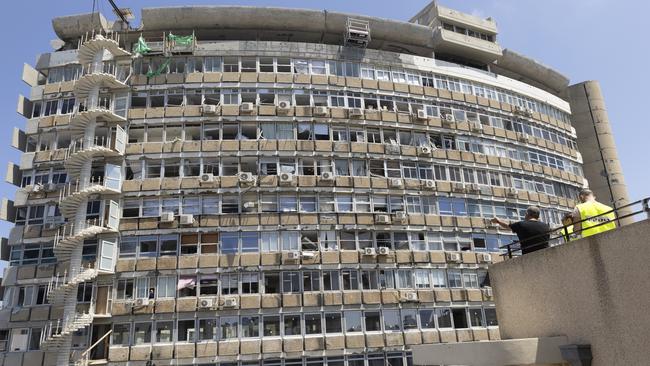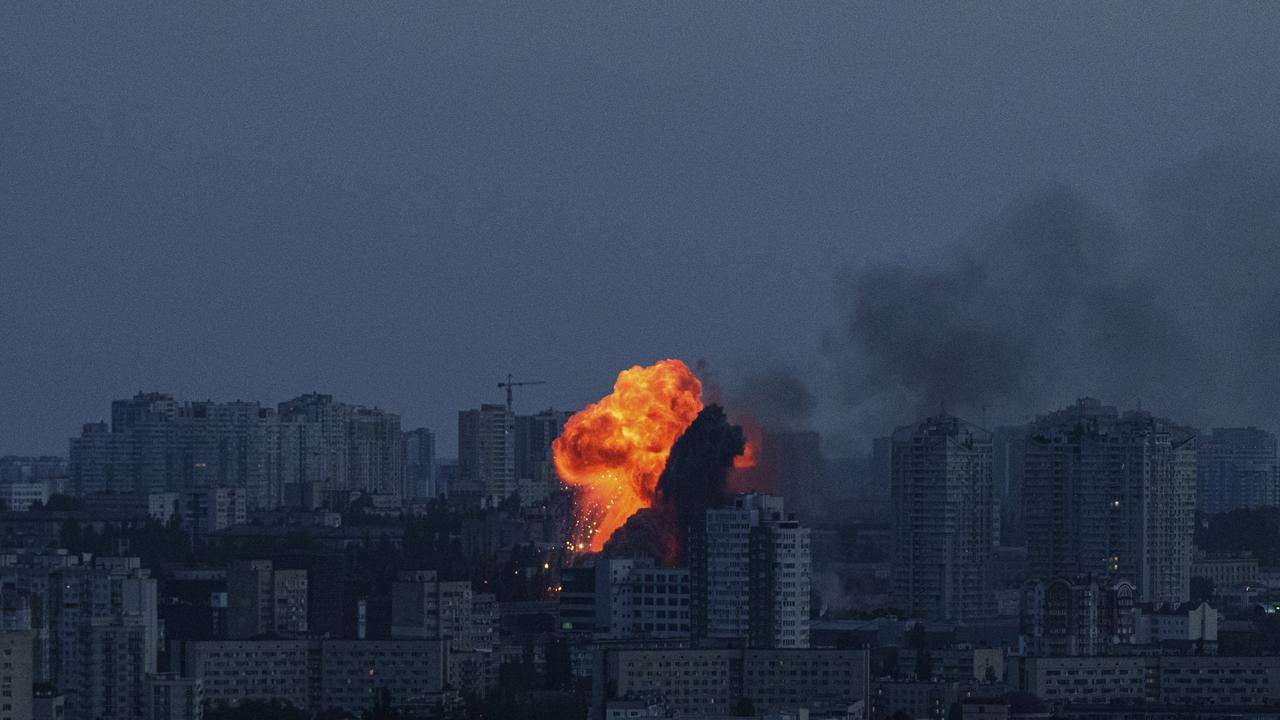How the Houthis rattled the US navy – and transformed maritime war
US officials are dissecting how a scrappy adversary was able to test the world’s most capable surface fleet which rained down at least $1.5bn worth of munitions on them.
The evening of May 6, an F/A-18 Super Hornet was coming in for a landing on the USS Harry S. Truman aircraft carrier in the Red Sea. An on-board mechanism to slow down the fighter jet failed, and the $67 million aircraft slid off the carrier’s runway and into the water.
It was the third fighter jet that the Truman had lost in less than five months, and came hours after President Trump surprised Pentagon officials with the announcement that the US had reached a truce with the Houthis in Yemen. The Truman had arrived at the Red Sea in December 2024 to battle the Iran-aligned militants – joining a campaign filled with heavy exchanges and close calls that strained the US Navy.
Officials are now dissecting how a scrappy adversary was able to test the world’s most capable surface fleet. The Houthis proved to be a surprisingly difficult foe, engaging the Navy in its fiercest battles since World War II despite fighting from primitive quarters and caves in one of the world’s poorest countries.

The Houthis benefited from the proliferation of cheap missile and drone technology from Iran. They fired antiship ballistic missiles, the first-ever combat use of the Cold War-era weapon, and they innovated how they deployed their weaponry. The latest technologies have transformed maritime warfare, much the way they have rewritten the script for land wars in Ukraine – forcing militaries to adapt in real time. The US is developing fresh ways to intercept the newest drones and missiles but still relies largely on expensive defence systems.
Some 30 vessels participated in combat operations in the Red Sea from late 2023 through this year, around 10 per cent of the Navy’s total commissioned fleet. In that time, the US rained down at least $1.5 billion worth of munitions on the Houthis, a US official said.
The Navy was able to destroy much of the Houthis’ arsenal – but it has yet to achieve the strategic goal of restoring shipping through the Red Sea, and the Houthis continue to regularly fire missiles at Israel.
Military and congressional leaders who have begun scrutinising the campaign for lessons worry about the strain of such gruelling deployments on overall force readiness. The Pentagon is also investigating the lost planes and a separate at-sea collision – incidents that all involved the Truman strike group – with results expected in the coming months.
Central Command – also known as Centcom, which oversees US military operations in the Middle East – declined to comment on ongoing investigations or on the campaign’s performance and impact.

The effects of the deployment will be felt for years. It drew resources from efforts in Asia to deter China and pushed back maintenance schedules for carriers. That could create critical gaps in the second half of the decade, when the giant warships will have no choice but to dock for service.
Despite the wear and tear, Navy officials said the fight with the Houthis offered invaluable combat experience, and the Red Sea conflict is viewed inside the Pentagon as a warm-up for a potential “high-end” conflict with China.
Caught off guard
The Houthis have gained considerable power since the group – combatants in Yemen’s long-running civil war – conquered much of the country a decade ago. They later fought off a campaign led by Gulf powers Saudi Arabia and the United Arab Emirates to roll them back.
At the start of the war in Gaza, the Houthis, who chant “death to America, death to Israel” and cast themselves as defenders of the Palestinians, began attacking Israeli cities as well as ships transiting the Red Sea.
The USS Carney destroyer was in the Red Sea when the Houthis launched their first barrage of drones and missiles on Oct. 19, 2023, catching the sailors aboard off guard. By the end of the 10-hour engagement, the crew had endured the most intense combat a US Navy warship had seen in the better part of a century, shooting down more than a dozen drones and four fast-flying cruise missiles.

With the Houthis pledging to intensify attacks, US military officials scrambled to solve a logistical problem: Destroyers like the Carney were out of the fight for as long as two weeks as they travelled to and from the Mediterranean to rearm, and nearby countries were wary of themselves becoming Houthi targets. The Pentagon eventually secured access to what one official called a “game-changing” port in the Red Sea that allowed warships to reload without leaving the theatre.
In December of that year, Biden cobbled together a multinational coalition to protect one of the world’s busiest shipping lanes and then launched a US-led campaign of air strikes. For much of the campaign, the Pentagon kept two carrier groups in the region, each comprising at least five ships and around 7,000 sailors.
Throughout 2024, the Houthis launched dozens of attacks on commercial shipping, and the US struck back in Yemen to prevent imminent attacks or degrade the militants’ arsenal. In February, a British-owned bulk carrier was struck and later sank with its cargo of fertiliser. Three people were killed on board a Barbados-flagged ship after it was struck in March. Two more ships were abandoned in June after being struck by Houthi missiles.
The pace of operations took a toll on sailors, who were constantly within range of the Houthis and needed to remain vigilant around the clock. The USS Dwight D. Eisenhower aircraft carrier made just one short port call during seven months of fighting.
On a particularly busy day last November, Navy ships defeated at least eight one-way attack drones, five antiship ballistic missiles and four antiship cruise missiles launched by the Houthis, without incurring any injuries or damage.

At a recent naval symposium, Vice Admiral Brad Cooper, the deputy commander of US military command in the Middle East, described one night late last year on the USS Stockdale. As the destroyer sailed through a chokepoint in the southern Red Sea, the crew switched off the lights, charted a zigzag course and braced for attack.
Just past midnight, the Houthis launched four ballistic missiles. The 509-foot destroyer accelerated and fired surface-to-air missiles in defence. One Houthi missile, travelling at nearly 6,400 kilometres an hour, was so close when it was intercepted that falling debris had to be shot down as well.
Ten minutes later, the Houthis fired an antiship cruise missile, which was taken out by fighter jets from a nearby aircraft carrier. Jets downed another cruise missile and multiple drones loaded with explosives, while the carrier struck Houthi targets inside Yemen.
Around 2am, another Houthi drone was picked up flying low and slow directly at the Stockdale. The only option was to open fire with an automatic artillery gun mounted on the deck. When the drone dropped into the sea, the crew erupted in cheers and high-fives.

‘A sitting duck’
The battlefield favoured the militants. In the Red Sea’s confined waters, barely 200 miles at the widest point, large ships have limited ability to manoeuvre and spend long periods in view of the coastline, where Houthi spotters can help target ships.
Crews usually only picked up drone and missile launches a minute or two before impact and had to decide how to respond within about 15 seconds. They intercepted hundreds of attacks by the Houthis.
“You make it a sitting duck out there and within range of Houthi weapons, ” Bryan Clark, a former Navy strategist and senior fellow at the Hudson Institute, said of deploying a carrier to the area.
The Navy is used to operating in a similar environment in the Persian Gulf, where the Iranians are at close range. But militias like the Houthis are harder to deter than a regular government – and such groups have become more dangerous with the proliferation of antiship ballistic missiles and attack drones.
“We used to be able to operate close to shore like this, because the expectation was that adversaries would not attack a carrier out of concern for the repercussions,” Clark said.
Sailors often had radar systems tuned to high sensitivity to give them time to intercept drones and missiles. Reviewing and refining radar settings to avoid picking up false positives while still spotting threats at a useful range was one of the most difficult tasks and a key source of stress for shipboard operators, according to an officer who spent six months in the Red Sea.
The USS Truman’s three lost fighter jets are now under investigation by the Pentagon. “It’s unprecedented,” said a Navy official. “Perhaps it’s just pure coincidence or bad luck – or there are some underlying issues.”
Two Navy SEALs, or sea-air-land special-operations forces, were lost at sea early last year while boarding a boat at night that officials said was carrying ballistic and cruise missile components from Iran to Yemen. One of the SEALs fell into the water while trying to climb into the boat and the other one jumped in after him. The Navy searched for them for 10 days before declaring them dead. The fatalities occurred off the coast of Somalia in the Arabian Sea, hundreds of miles from Yemen’s shores.
“Over the past year, the Navy has operated under intense and sustained combat conditions in the Red Sea – the most active maritime conflict zone in a generation,” Rep. Ken Calvert (R., Calif.), who chairs the House appropriations subcommittee on defence, said at a hearing on May 14. “But this persistent operational tempo comes at a cost. Ships and crews are being pushed hard, deployments are being extended, and readiness for other global contingencies is being strained.” Changing tactics While the Houthis never successfully hit a US vessel, they did get better at tracking moving targets.
Dow Jones



To join the conversation, please log in. Don't have an account? Register
Join the conversation, you are commenting as Logout